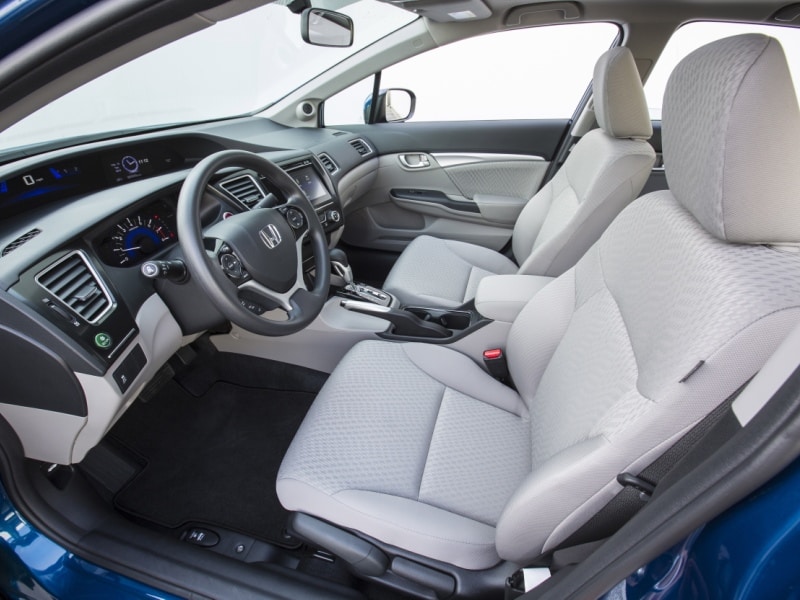Recent Articles
Popular Makes
Body Types
2015 Honda Civic Sedan Road Test Review
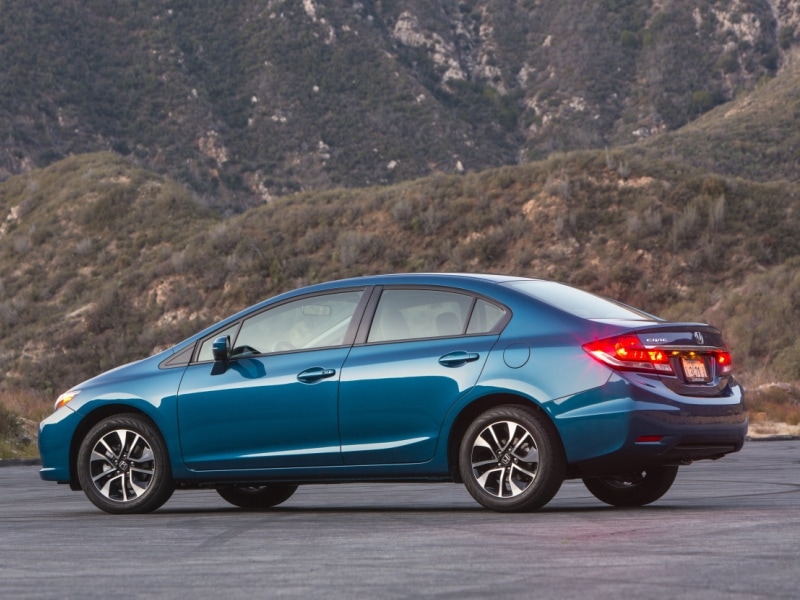
The Honda Civic can boast a lineage going all the way back to the first days of Honda automobiles in the United States. While the company had sold motorcycles in the US for quite some time, the introduction of the 1972 Honda Civic subcompact hatchback was something of a revelation. It was also a very timely move for Honda, as the world experienced the first energy crisis the same year with the 1972 OPEC oil embargo. This created a ready market for the diminutive Honda, which leveraged it into popularity enjoyed to this day. The contemporary Civic lineup is as expansive as some car companies’ entire model range. There are literally five different versions of the sedan (plus two of the coupe). Ranging in character from ultra fuel-efficient to high performing, with alternatively fueled powertrains too, Honda’s Civic is a car line with appeal both broad and deep.
Models and Pricing
The basic Honda Civic has a starting price of $18,490. The ultra-efficient Civic HF has a base MSRP of $20,042. The high performance Civic Si Sedan starts at $23,090, while Civic Hybrid starts at $24,735, and Civic Natural Gas starts at $26,740.
Within each model range, there is a variety of trim lines. Some models get all of them, while others only get the higher trim packages. The basic Civic gets the LX, EX, EX-L, and EX-L Navi trim packages.
Standard features with the LX trim package include 15-inch steel wheels, full power accessories, air conditioning, a fold-down rear seatback, cruise control, a five-inch video display, a rearview camera, Bluetooth, text messaging, and Pandora music capability.
Civic SE adds 15-inch alloys, automatic climate control, smartphone integration, and an upgraded audio system. Civic EX gets 16-inch alloys, automatic headlights, rear disc brakes, keyless entry and ignition, a sunroof, a seven-inch touchscreen, and a 60/40 split folding rear seatback. The EX-L package adds leather upholstery, 17-inch wheels, and heated front seats, while EX-L Navi trim adds—you guessed it—navigation.
With that said, Civic HF is largely equipped with the LX package; Civic Hybrid can be had with the equivalent of either the EX, EX-L, or EX-L Navi trims. Civic Natural Gas is set up with either the approximate equivalent of the LX package, or EX-L.
Civic Si gets 18-inch wheels, foglights, specific styling cues, a larger engine, a tail spoiler, a limited-slip differential, sport tuned suspension system, sport seats, a leather-wrapped steering wheel, an aluminum shift knob, faux carbon fiber interior trim, red backlit gauges, and the EX trim package’s comfort and convenience features.
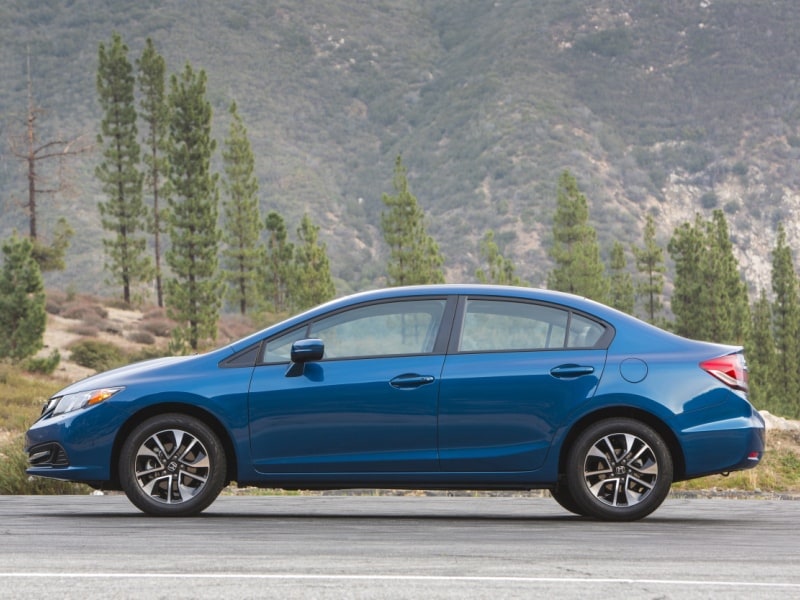
Design
Drawn specifically to appeal to younger people, the Honda Civic’s windswept shape both cheats the wind and defies age. The steeply raked windshield provides great visibility. Working in concert with the hood that seems to sweep all the way down to the street, it also makes air flow smoothly over the body of the car.
The wedge-shaped body imparts a sense of motion while also providing for a deep trunk at the rear of the car. The truly remarkable thing about the exterior styling of the Civic Sedan is the way it plays for both a contemporary economical car as well as an excellent platform for the performance-oriented Si trim package.
Inside, the two-tiered dash arrangement allows the driver to monitor speed, fuel level, and other vitals with minimal eye movement away from the road. Canting the dash toward the driver keeps all controls within easy reach, while still permitting access to entertainment and climate functions by the front passenger.
All in all, the Honda Civic Sedan’s look marks it as the quality piece it is, inside and out.
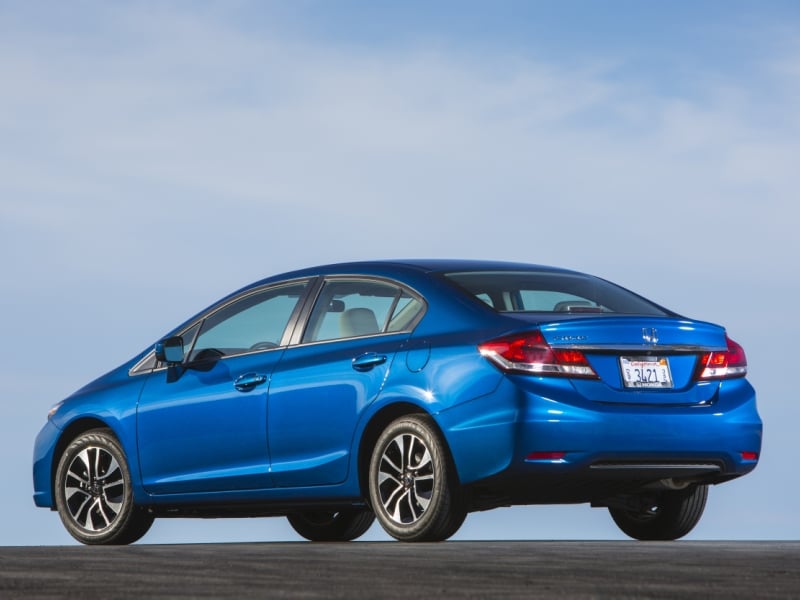
Features and Controls
It’s a good thing those controls are accessible by the passenger though, because the radio in the Civic’s touchscreen is almost entirely touch dependent. Because there is no tuning knob for the radio, finding a radio station can be a death defying experience—one best undertaken (pun not entirely intended) — while the car is sitting still. Further, a sliding bar somewhat inaccurately accomplishes volume adjustment.
Fortunately, the steering wheel also offers controls for some secondary functions, including audio level. And, we suggest you get to know those steering wheel controls intimately. We dig the simplicity accomplished by the dearth of dials and buttons, but we also miss the functionality afforded by them. While the touchscreen thing says hip and modern, a dial and monitor solution says it too—with much less tedium.
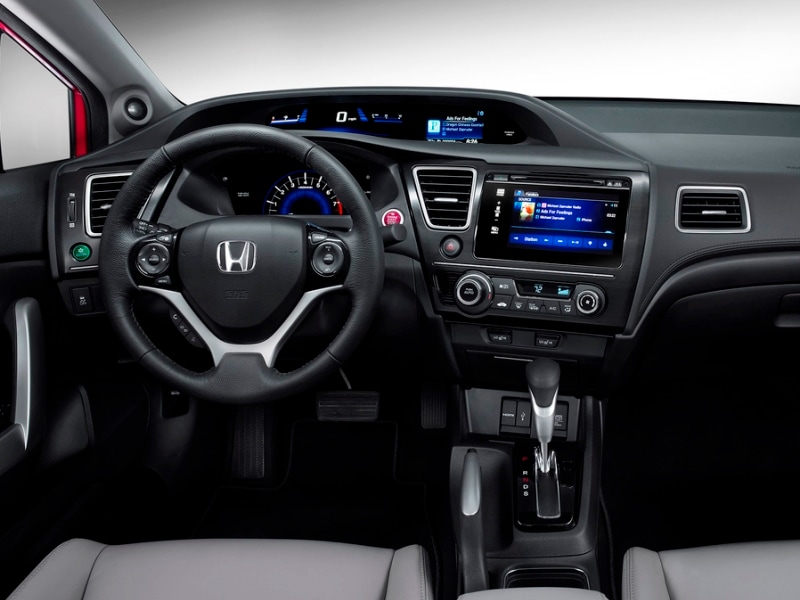
Comfort and Cargo
On the other hand, when it comes to passenger comfort, Honda nailed it big time. There’s plenty of legroom up front, accompanied by nicely firm seats capable of considerable long distance comfort.
The rear seats are more than generous for a car in this class, with good legroom (if front seat passengers are inclined to share), more than adequate shoulder room for a pair of adults, and good headroom too—despite the arching roofline. Another plus, the Civic Sedan uses slight stadium seating, meaning the rear seat is mounted a bit higher than those in the front. This provides better visibility for rear seat passengers, along with better thigh support, and increased legroom.
Cargo capacity is 12.5 cubic feet in the trunk. Keep in mind, the rear seatback folds, so longer items can use the rear of the passenger compartment as well. One caveat, Civic Hybrid gives over trunk space to the battery pack, so the rear seat doesn’t fold and capacity is diminished to 10.7 cubic feet.
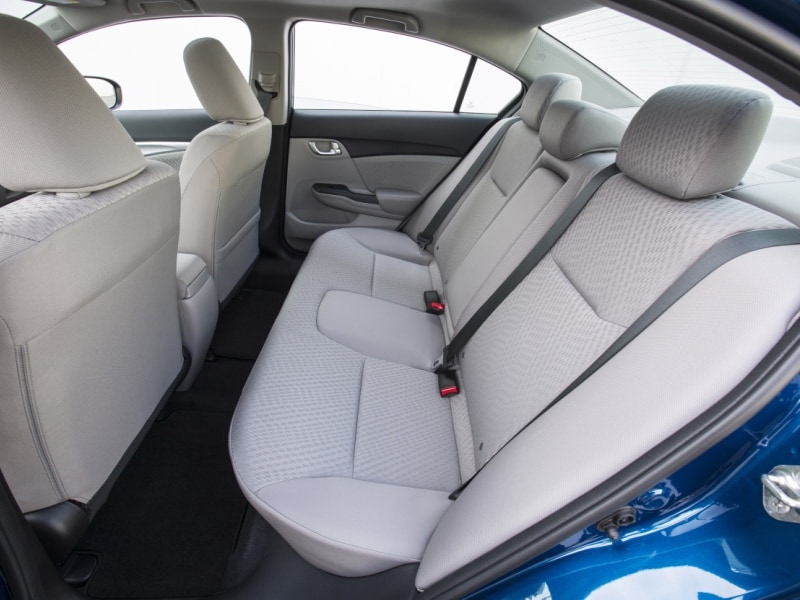
Safety
According to NHTSA, the Honda Civic Sedan is a Five Star Car for safety, with exemplary scores in all testing—save frontal impact. In those tests, Civic Sedan chalked a four star performance — making it still above average in this regard. The Insurance Institute for Highway Safety awarded Civic Sedan its top rating (“Good”) in all testing.
Standard safety features include ABS, stability control, traction control, front side airbags, side curtain airbags, and a rear view camera. Upper trim levels (EX and above) include rear disc brakes, HondaLink crash notification, and the LaneWatch system.
LaneWatch places a camera in the right-side exterior rearview mirror housing for a view of the passenger side of the car when the right turn signal is activated. LaneWatch helps ensure cyclists or other vehicles won’t be affected by the impending turn.
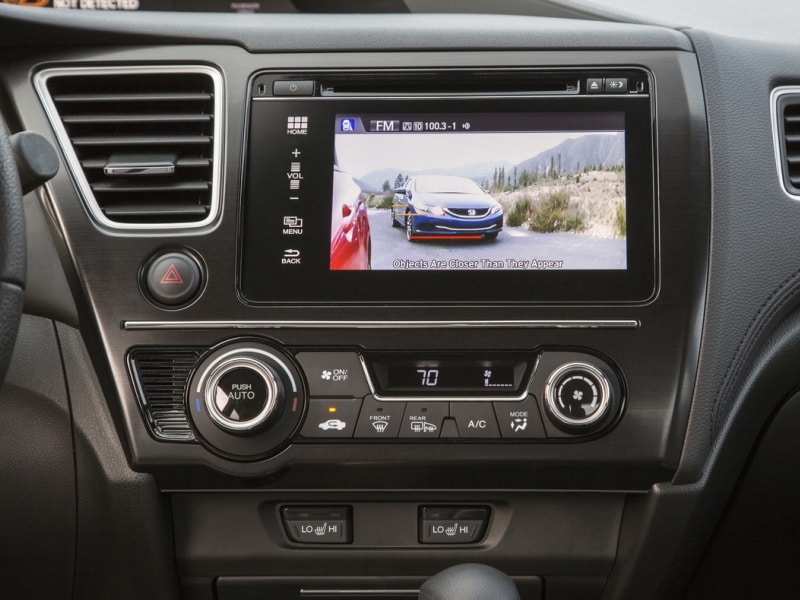
Engines and Fuel Economy
A 1.8-liter inline four-cylinder engine good for 143 horsepower and 129 ft-lbs of torque powers most of the Honda Civic Sedan variants. The Civic LX gets a five-speed manual transmission as standard, with the option of a continuously variable transmission (CVT).
The CVT is standard with all other trims. Fuel economy with the CVT is 30-mpg city, 39-highway, and 33 combined. The manual detracts from fuel economy, returning 28-city, 36-highway, and 31 combined. The high fuel efficiency Civic HF does 31-city, 41 highway, and 35 combined.
Civic Hybrid runs a 1.5-liter inline four in conjunction with an electric motor, a lithium-ion battery pack, and the CVT. Total system output is 110 horsepower and 127 ft-lbs of torque. Mileage is rated at 44-city, 47-highway, and 45 combined.
Civic Natural Gas also uses the 1.8-liter four, but it delivers 110 horsepower and 108 ft-lbs of torque to a five-speed automatic transmission. Quoted fuel economy is 27-city, 38-highway, and 31 combined.
The Honda Civic Si gets a six-speed manual transmission and a 2.4-liter four with 205 horsepower and 174 ft-lbs of torque. Fuel economy is rated at 22-city, 31-highway, and 25 combined.
All Honda Civics use front-wheel drive.
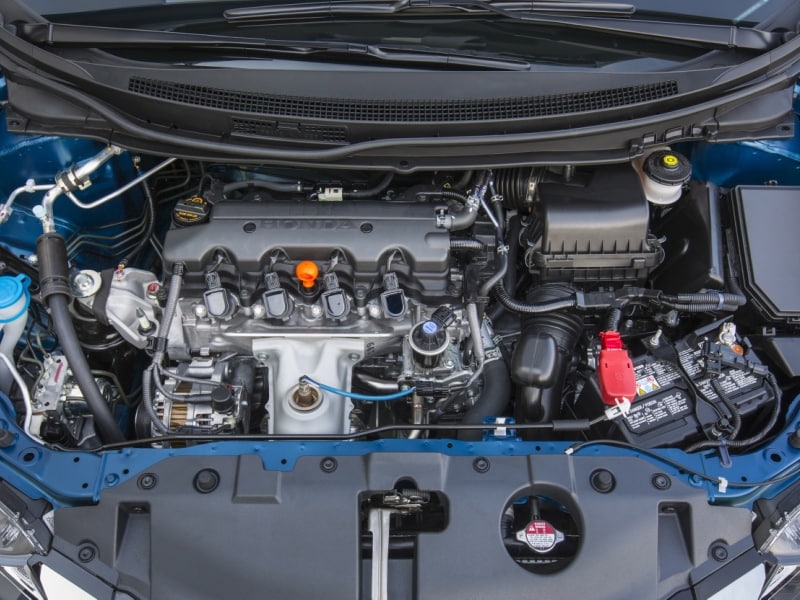
Performance
While performance varies depending upon the drivetrain selected, one thing all Civics have in common is the sophisticated way they go about doing business. The Honda Civic Sedan drives with smoothness and polished calibration usually experienced only in cars costing considerably more. Steering is highly accurate, ride quality is smooth, and handling is suitably agile. What’s more, the Honda Civic Sedan is among the quietest cars in its segment.
Yes, the 1.8-liter could do its thing with a bit more verve, but given the “tradeoff “of outstanding fuel economy, we ain’t mad at it. Further, given the CVT actually returns better fuel economy than the manual transmission, we can’t really justify going with a clutch pedal, unless you’re talking Civic Si Sedan.
Which, of course, is a whole different argument. Easily one of the most exciting cars in its category, the Honda Civic Si Sedan is so much fun you’ll have to drive it to believe it.
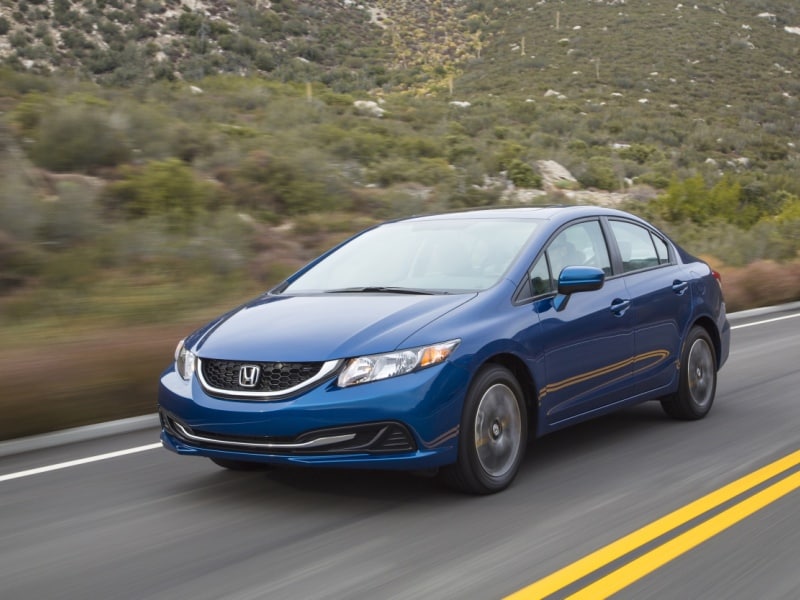
Final Thoughts
Some people say that when you try to be everything to everybody, you’ll always wind up being nothing to nobody. Now, while what they really mean by that is "nothing to anyone," the 2015 Honda Civic Sedan is in fact nothing to nobody. With so many different powertrain variants on offer, and such a broad array of comfort and convenience features, the Honda Civic Sedan offers something appealing for practically everyone.
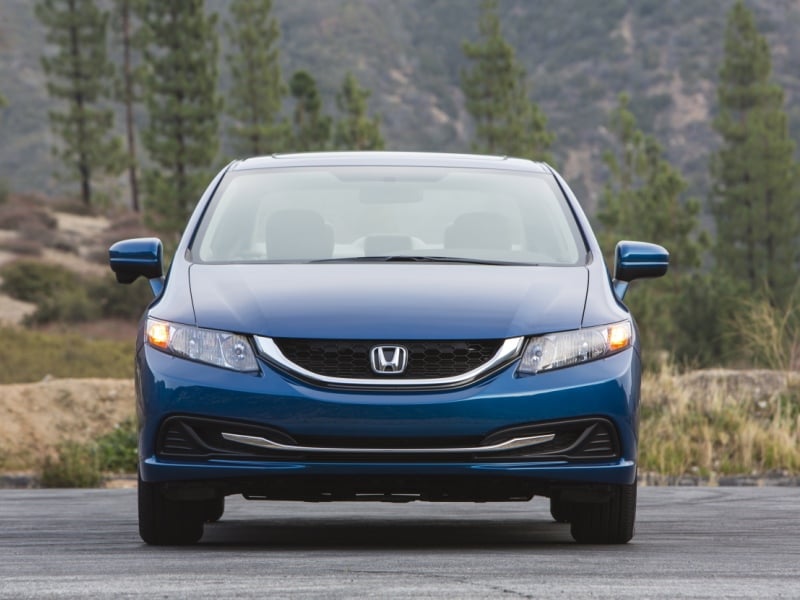
Pros and Cons
Pros: Handsome styling, well built, exceptionally reliable
Cons: Cutting edge safety features like lane keep assist, rear cross traffic alert, and proximity sensors not available.
